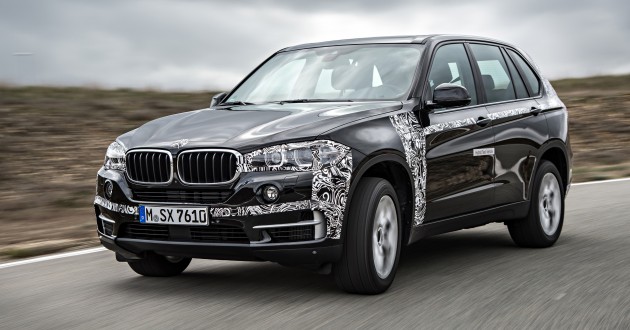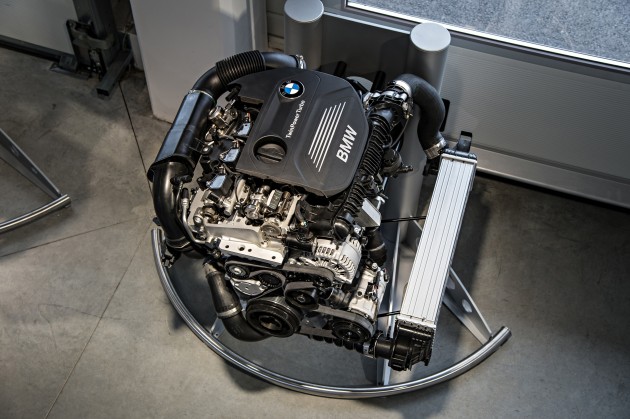
The new BMW X5 eDrive is starkly different from the original BMW hybrid SUV - the BMW ActiveHybrid X6. While that one paired a 4.4 litre twin-turbo V8 to two electric motors, the X5 eDrive has something a lot more modest in terms of power under its hood.
This set of photos were released from an international media event where BMW invited press from certain countries to try out a prototype X5 eDrive. No, we weren't there, but what we can do is show you these photos of the prototype. Like the Concept X5 eDrive that was shown at Frankfurt 2013, this near production prototype features a 2.0 litre four cylinder turbo engine paired with an electric motor.
The electric motor is sandwiched between the engine and the ZF eight speed automatic gearbox, in place of where the torque converter normally would be. The 94 hp electric motor also functions as the engine starter (with auto start/stop support) and the alternator. Powering the motor is a 9kWh lithium ion battery pack. Acceleration to 100km/h is supposed to take about 7 seconds.
From the gallery released by BMW we can see that the eDrive system has a few modes. The iDrive display screen caps show you can choose between at least the following modes - MAX eDRIVE and AUTO eDRIVE. We assume that MAX eDRIVE will keep the car on battery power for as long as technically possible, while AUTO eDRIVE will juggle between operation modes appropriately.
The 9kWh battery will allow up to 33km of pure electric range. The battery can be recharged via brake energy regeneration, or via a plug-in socket at the base of the A-pillar.

BMW also showcased its next generation four cylinder 2.0 litre turbo engine at the event. This engine is from its new engine family, the first of which has debuted in the form of the 1.5 litre three-cylinder in the MINI Cooper and the BMW 2-Series Active Tourer.
Check out our previous story to read about this new engine family in detail, which consists of petrol and diesel engines in three sizes - 1.5 litre three cylinder, 2.0 litre four cylinder and 3.0 litre six cylinder.
Read more of this post


No comments:
Post a Comment